不知是否能從若干帶著簡述之圖形︰
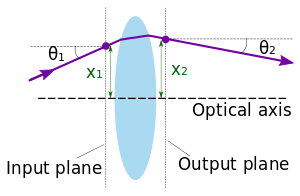
In ray transfer (ABCD) matrix analysis, an optical element (here, a thick lens) gives a transformation between 

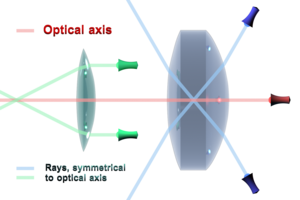
Optical axis (coincides with red ray) and rays symmetrical to optical axis (pair of blue and pair of green rays) propagating through different lenses.
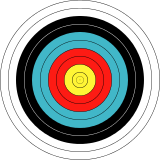
In 2-dimensions an archery target has circular symmetry.

A surface of revolution has circular symmetry around an axis in 3-dimensions.
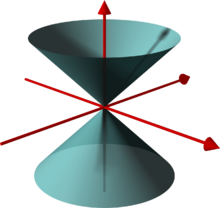
A double-cone is a surface of revolution, generated by a line.
外添一個模擬軟件
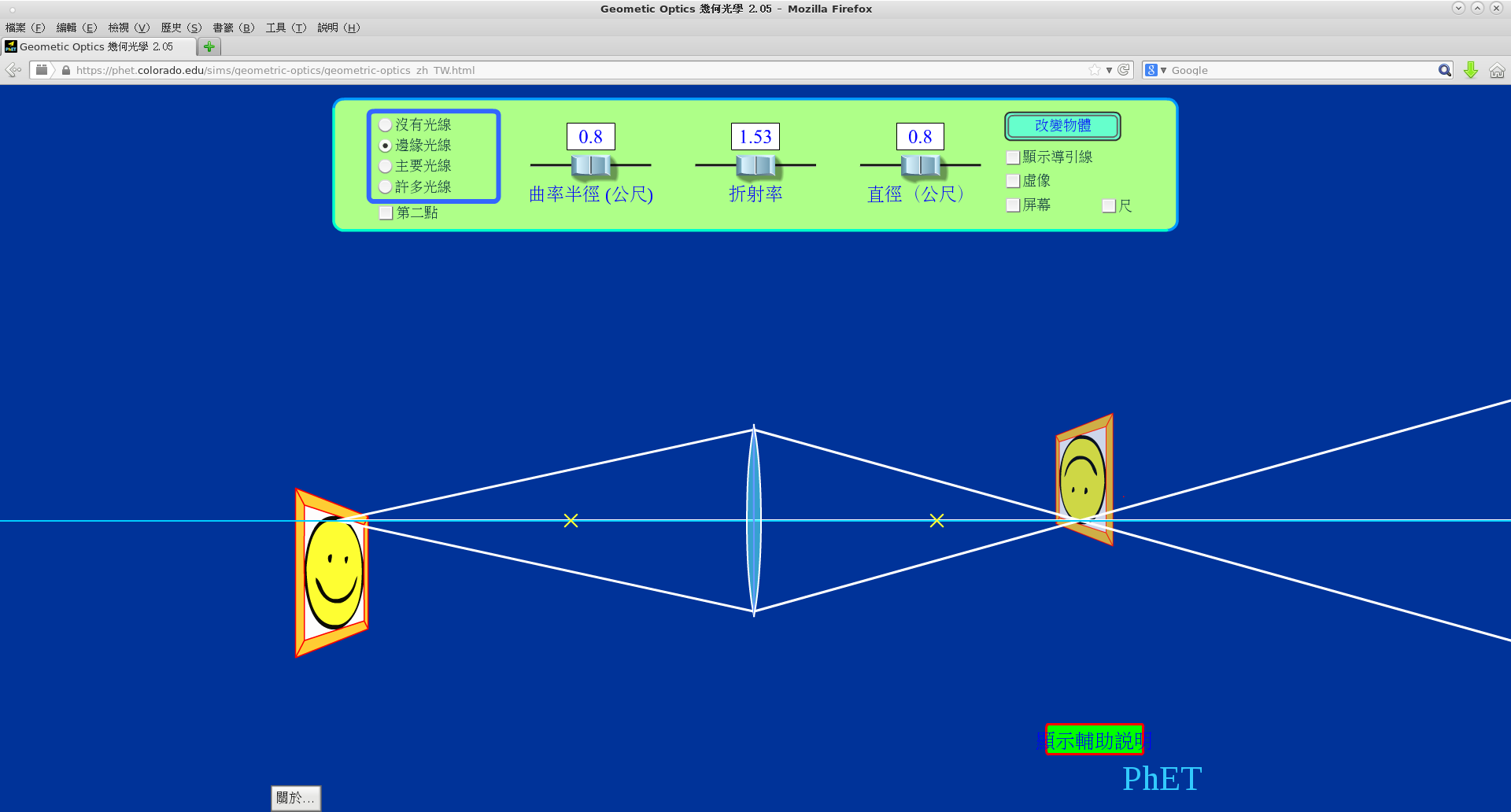
,人們就可以明白『幾何光學』之『座標系』 ![]() 選取的道理 ?能夠知道『物面』── 物體所在面,垂直於光軸 ── 以及『像面』── 成像所在面,也垂直於光軸 ── 可用『極座標』。因此這一『物圓』對應那一『像圈』,而且此『圓圈』僅需
選取的道理 ?能夠知道『物面』── 物體所在面,垂直於光軸 ── 以及『像面』── 成像所在面,也垂直於光軸 ── 可用『極座標』。因此這一『物圓』對應那一『像圈』,而且此『圓圈』僅需 ![]() 決定而已??從此『圓圈』各向
決定而已??從此『圓圈』各向 ![]() 所發射的『小角光』,定然會聚焦!!
所發射的『小角光』,定然會聚焦!!
並且了解為什麼照片是『方』的耶!!??
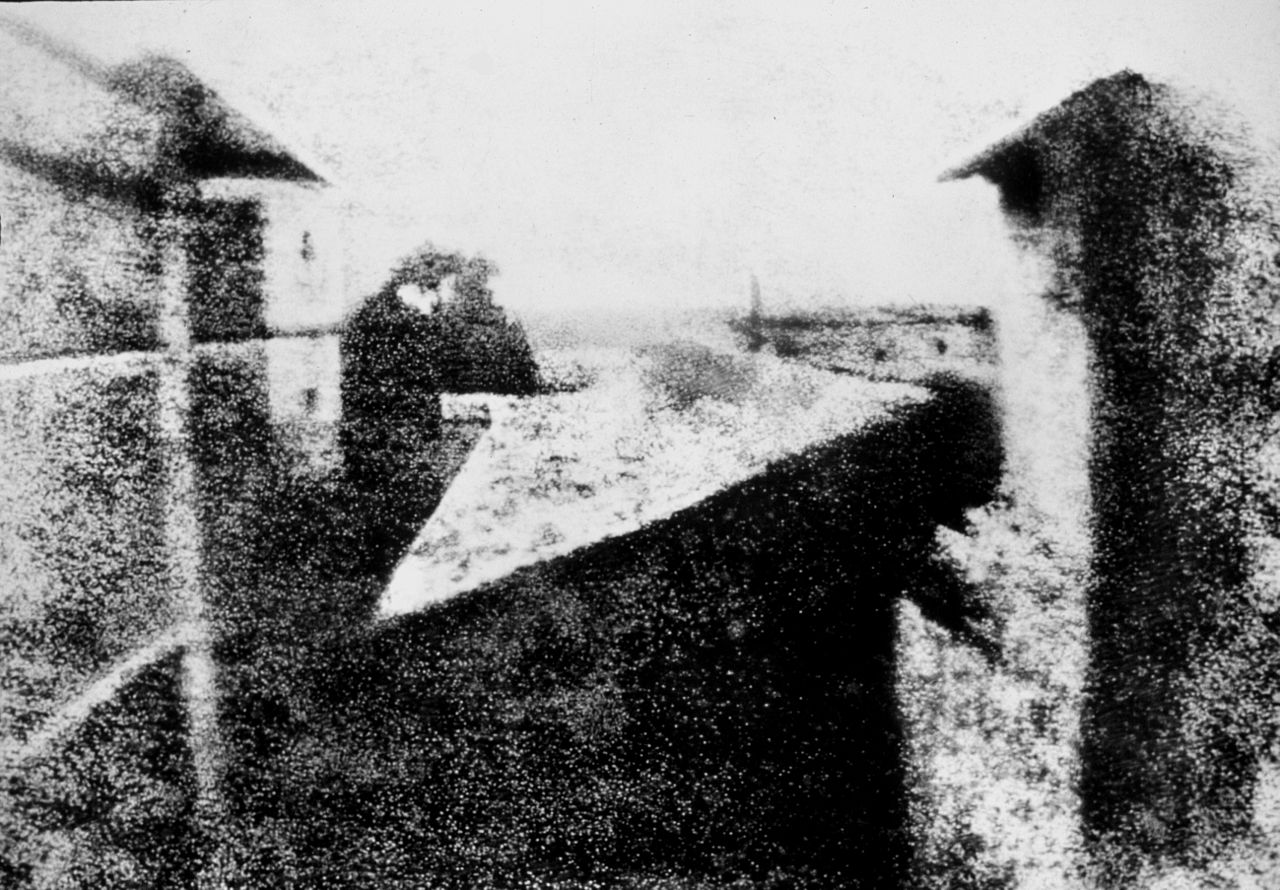
尼埃普斯用暗箱拍攝的照片,為現存最早的照片,拍攝年份為1826年,花了8小時曝光。這張照片一度被世人遺忘,由1898年最後一次在倫敦公開展出,至1952年被歷史學家尋回,相隔超過半世紀。

焚毀前的圓明園照片,由費利斯·比特攝於1860年10月6日-18日
樂觀的想,視覺闡釋周遭環境,潛意識補足推理所需,
Visual perception is the ability to interpret the surrounding environment by processing information that is contained in visible light. The resulting perception is also known as eyesight, sight, or vision (adjectival form: visual, optical, or ocular). The various physiological components involved in vision are referred to collectively as the visual system, and are the focus of much research in psychology, cognitive science, neuroscience, and molecular biology, collectively referred to as vision science.
Leonardo da Vinci (1452–1519) is believed to be the first to recognize the special optical qualities of the eye. He wrote “The function of the human eye … was described by a large number of authors in a certain way. But I found it to be completely different.” His main experimental finding was that there is only a distinct and clear vision at the line of sight—the optical line that ends at the fovea. Although he did not use these words literally he actually is the father of the modern distinction between foveal and peripheral vision.[citation needed]
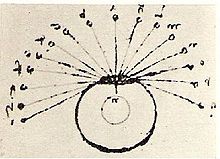
Leonardo da Vinci: The eye has a central line and everything that reaches the eye through this central line can be seen distinctly.
The fovea centralis (the term fovea comes from the Latin, meaning pit or pitfall) is a small, central pit composed of closely packed cones in the eye. It is located in the center of the macula lutea of the retina.[1][2]
The fovea is responsible for sharp central vision (also called foveal vision), which is necessary in humans for activities where visual detail is of primary importance, such as reading and driving. The fovea is surrounded by the parafovea belt, and the perifovea outer region.[2] The parafovea is the intermediate belt, where the ganglion cell layer is composed of more than five rows of cells, as well as the highest density of cones; the perifovea is the outermost region where the ganglion cell layer contains two to four rows of cells, and is where visual acuity is below the optimum. The perifovea contains an even more diminished density of cones, having 12 per 100 micrometres versus 50 per 100 micrometres in the most central fovea. This, in turn, is surrounded by a larger peripheral area that delivers highly compressed information of low resolution following the pattern of compression in foveated imaging.
Approximately half of the nerve fibers in the optic nerve carry information from the fovea, while the remaining half carry information from the rest of the retina. The parafovea extends to a radius of 1.25 mm from the central fovea, and the perifovea is found at a 2.75 mm radius from the fovea centralis.[3]
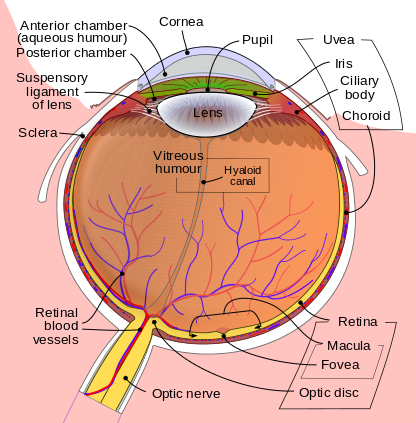
Schematic diagram of the human eye, with the fovea at the bottom. It shows a horizontal section through the right eye.
Unconscious inference
Hermann von Helmholtz is often credited with the first study of visual perception in modern times. Helmholtz examined the human eye and concluded that it was, optically, rather poor. The poor-quality information gathered via the eye seemed to him to make vision impossible. He therefore concluded that vision could only be the result of some form of unconscious inferences: a matter of making assumptions and conclusions from incomplete data, based on previous experiences.[citation needed]
Inference requires prior experience of the world.
Examples of well-known assumptions, based on visual experience, are:
- light comes from above
- objects are normally not viewed from below
- faces are seen (and recognized) upright.[6]
- closer objects can block the view of more distant objects, but not vice versa
- figures (i.e., foreground objects) tend to have convex borders
The study of visual illusions (cases when the inference process goes wrong) has yielded much insight into what sort of assumptions the visual system makes.
Another type of the unconscious inference hypothesis (based on probabilities) has recently been revived in so-called Bayesian studies of visual perception.[7] Proponents of this approach consider that the visual system performs some form of Bayesian inference to derive a perception from sensory data. Models based on this idea have been used to describe various visual perceptual functions, such as the perception of motion, the perception of depth, and figure-ground perception.[8][9] The “wholly empirical theory of perception” is a related and newer approach that rationalizes visual perception without explicitly invoking Bayesian formalisms.
Gestalt theory
Gestalt psychologists working primarily in the 1930s and 1940s raised many of the research questions that are studied by vision scientists today.
The Gestalt Laws of Organization have guided the study of how people perceive visual components as organized patterns or wholes, instead of many different parts. “Gestalt” is a German word that partially translates to “configuration or pattern” along with “whole or emergent structure”. According to this theory, there are eight main factors that determine how the visual system automatically groups elements into patterns: Proximity, Similarity, Closure, Symmetry, Common Fate (i.e. common motion), Continuity as well as Good Gestalt (pattern that is regular, simple, and orderly) and Past Experience.
,恰是『視覺』『直覺』之『完備』與『不足』的乎??!!
格式塔學派(德語:Gestalttheorie)是心理學重要流派之一,興起於20世紀初的德國,又稱為完形心理學[1]。由馬科斯·韋特墨(1880-1943)、沃爾夫岡·苛勒(1887-1967)和科特·考夫卡(1886-1941)三位德國心理學家在研究似動現象的基礎上創立。格式塔是德文Gestalt的譯音,意即「模式、形狀、形式」等,意思是指「動態的整體(dynamic wholes)」。
格式塔學派主張人腦的運作原理是整體的,「整體不同於其部件的總和」。例如,我們對一朵花的感知,並非純粹單單從對花的形狀 、顏色、大小等感官資訊而來,還包括我們對花過去的經驗和印象 ,加起來才是我們對一朵花的感知[2]。
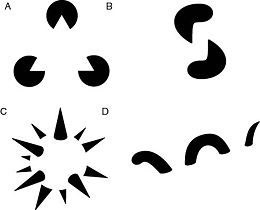

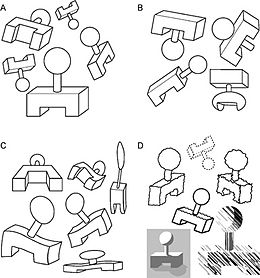
具體化
具體化(Reification)是知覺的「建設性」的或「生成性的」方面,這種知覺經驗,比起其所基於的感覺刺激,包括了更多外在的空間信息。例如,圖形A可以被知覺為三角形,儘管在事實上並未畫三角形。圖形C可以被視為三維球體,事實上也沒有畫三維球體。
組織性
「組織性」(Multistability或「組織性知覺」multistable perception)是趨勢模糊知覺經驗,不穩定地在兩個或兩個以上不同解釋之間往返。例如左圖所示「內克爾立方體」和「魯賓圖/花瓶幻覺」。
恆常性
恆常性(Invariance) 知覺認可的簡單幾何組件,形成獨立的旋轉,平移、大小以及其他一些變化(如彈性變形,不同的燈光和不同的組件功能)。例如圖例’A’在圖中都立即確認為相 同的基本形式,立即有別於’B’的形式。在彈性變形的’C’,描繪時使用不同的圖形元素,如’D’類。 產生「具體化」、「多重穩定性」、「不變性」和「不可分模塊單獨進行建模」,它們是不同方面的統一機制。
一朵活生生之『玫瑰花』是一『整體』,一枝已離株的『玫瑰花』難免凋零。不知誰說︰就算將之『解析』為根、莖、葉、…… 終究沒了『生命』★不過假使不『解析』,它果能活的長久嗎☆